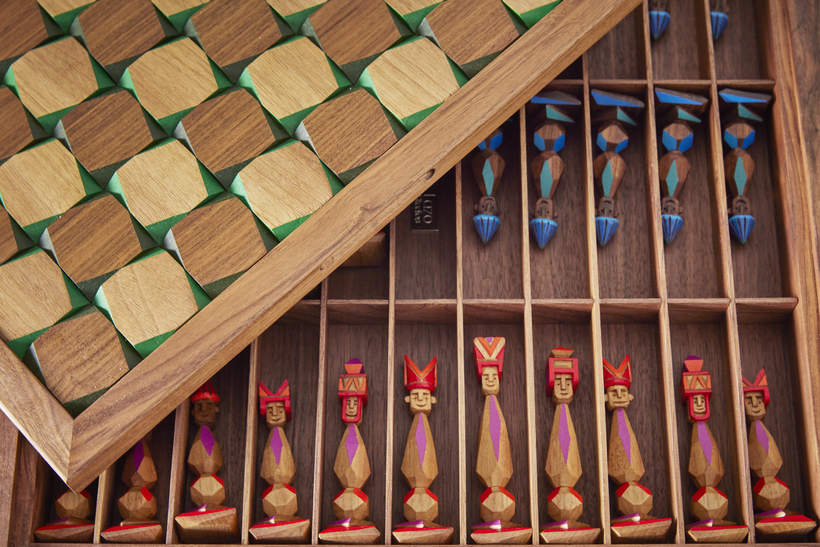Venice’s Fondazione Giorgio Cini is located on San Giorgio Maggiore, a small islet just opposite the entrance to the Canal Grande. There isn’t much on this patch of land. Just an old spired church, greenery, and the foundation’s complex, which looks across the lagoon to St. Mark’s Square and the Doge’s Palace. The space—43,000 square feet—has rarely been open to the public in its entirety. For three weeks, however, beginning on April 10, the Fondazione Giorgio Cini opens all its spaces to Homo Faber, a major showcase of contemporary artisans.

This year, 15 exhibitions and 60 galleries and ateliers take part in a biennial that focuses on the parallels between Japanese and European masters, an idea sparked by Japan’s tradition of bestowing the title “National Living Treasure” on major artisans who are recognized as a “national heritage” and whose ateliers are subsidized by the government. “These gifted, talented holders of an intangible yet precious artisanal know-how,” explains Alberto Cavalli, the foundation’s executive director and general curator, “are particularly inspiring.”
Twelve of Japan’s Living Treasures will have work on view at Homo Faber. Their creations include a seamless urushi-lacquered harp, yūzen-dyed kimonos, and a bamboo flower basket. Attendees can register for tea ceremonies and ikebana sessions, and a porcelain workshop presents European and Japanese ceramists in collaboration. Portraits of National Living Treasures can be seen in a gallery of work by the esteemed Japanese photographer Rinko Kawauchi.

The Japanese theme continues in an exhibition that explores Robert Wilson’s 1993 production of Puccini’s Madama Butterfly. Props, costumes, and stage images show how Eastern influences, enhanced by a monochrome palette and a dark backdrop, made the show a sensation. Meanwhile, a section in the revamped schoolhouse (within the complex) dives into the craftsmanship at 15 luxury houses, including Buccellati, Hermès, Vacheron Constantin, and Van Cleef & Arpels. It’s curated by Judith Clark, a professor of fashion and museology at the London College of Fashion.
The Michelangelo Foundation, which supports Homo Faber, has long championed emerging talent—finding it, fostering it, and creating connections for the young artists. The group is a not-for-profit institution masterminded by Johann Rupert, chairman of Richemont, and Franco Cologni, the former managing director and chairman of Cartier International. “[We] showcase that talent, celebrate competence, and offer to our artisans the chance of displaying not only their creations but the potential within them,” says Cavalli. The Next of Europe gallery, which exhibits up-and-coming masters, best celebrates the foundation’s ethos.

Homo Faber’s 2018 edition welcomed more than 60,000 visitors, and this year’s version is expected to be bigger still. (The 2020 iteration was canceled due to the pandemic.) The sheer vastness of the show can be overwhelming, and seeing it all may require a number of visits. But there’s no picking and choosing between exhibitions. When I ask Cavalli if he has a must-see, he replies, “I really cannot say. I think of them as if they were my children. They are all [a] labor of love!” —Elena Clavarino
Homo Faber is on at Venice’s Fondazione Giorgio Cini from April 10 to May 1
Elena Clavarino is an Assistant Editor for Air MaiL


 Discover
Discover